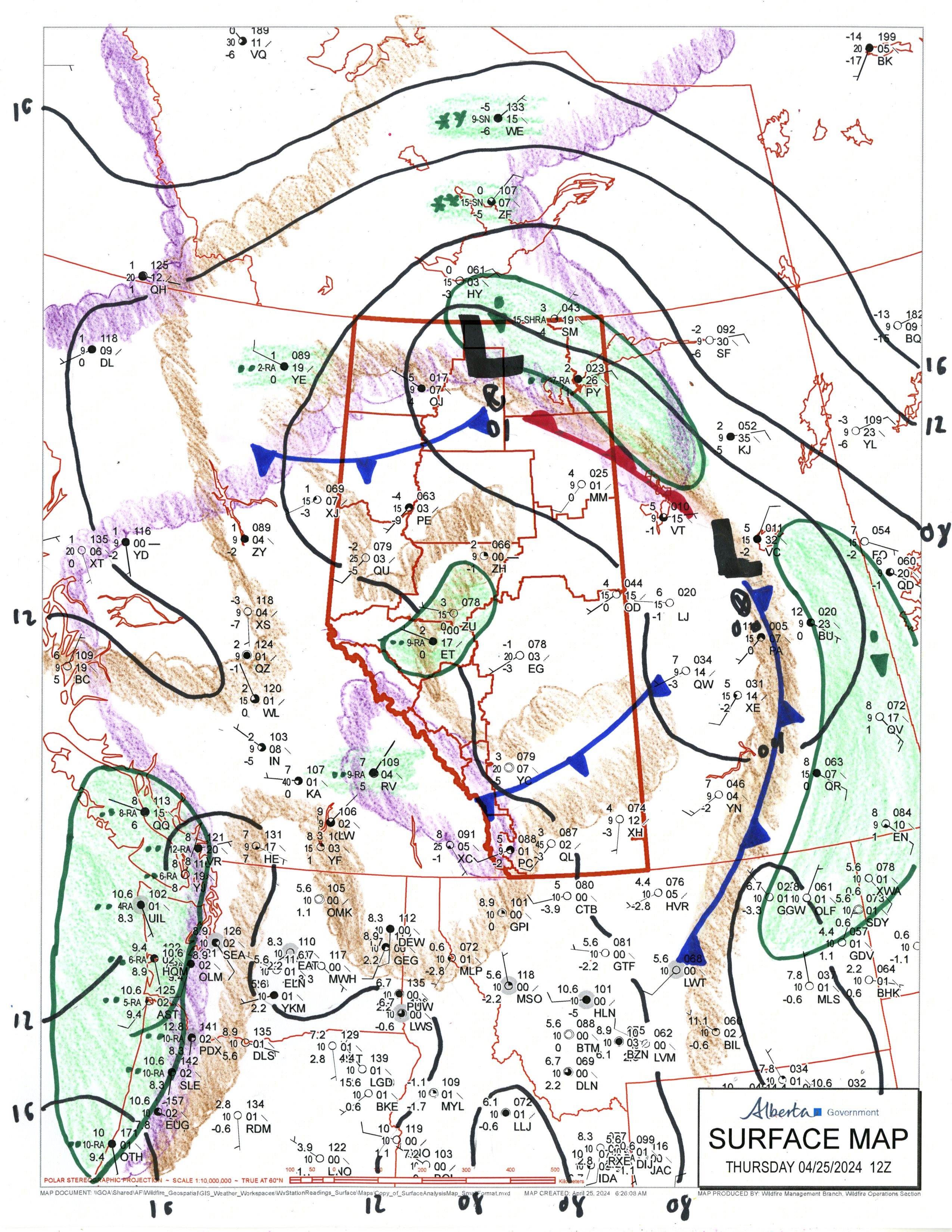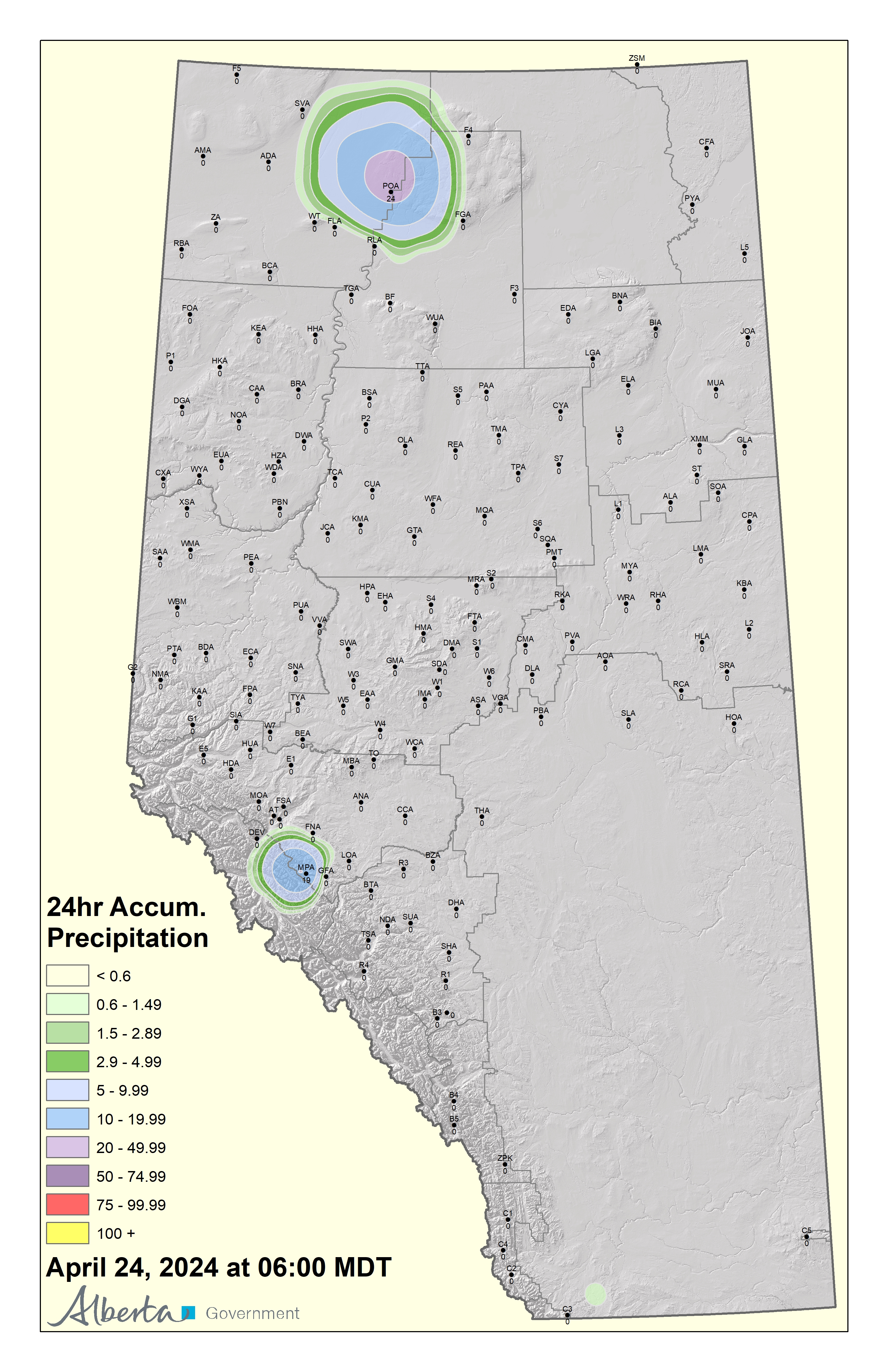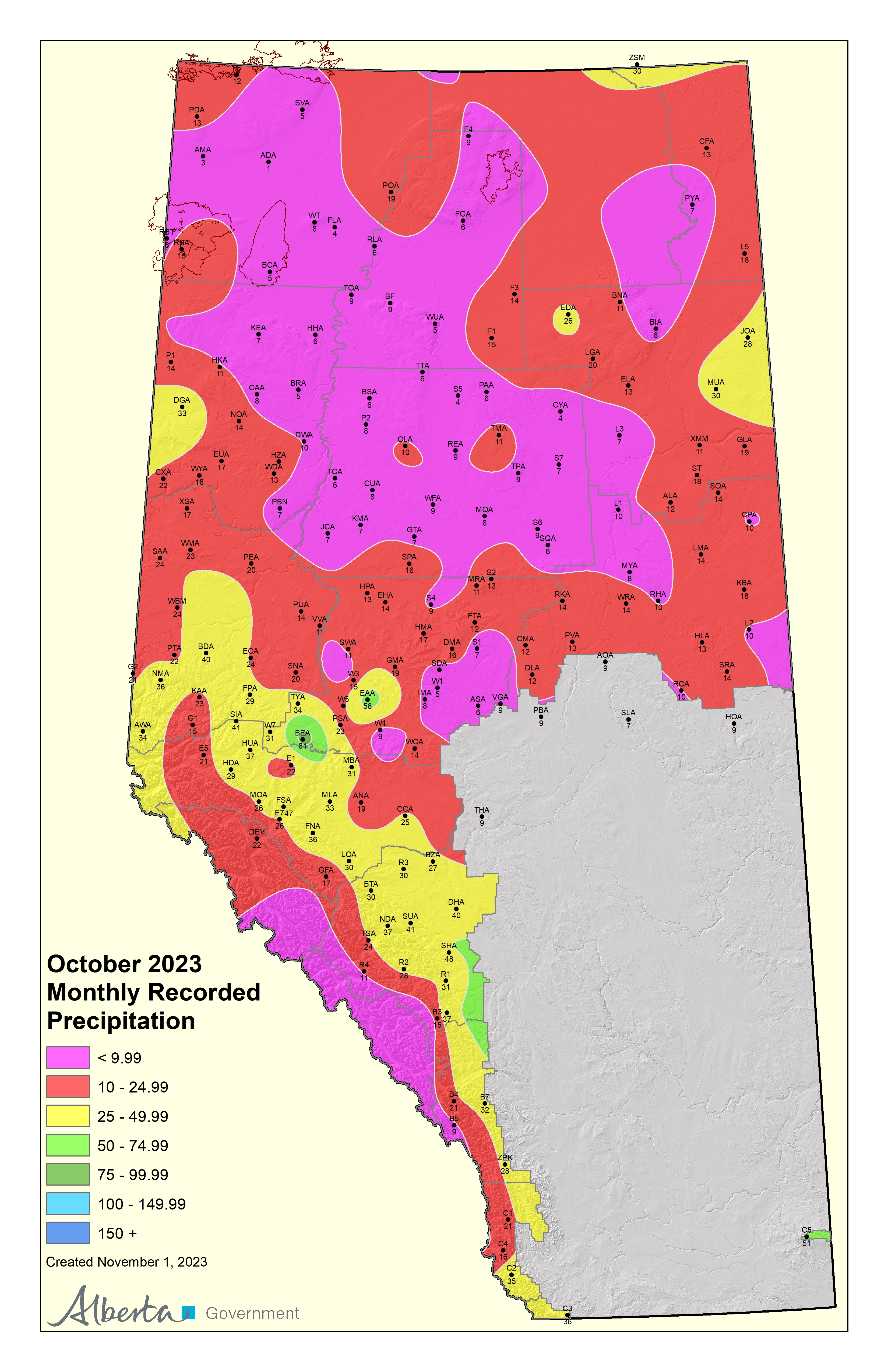Report a wildfire: If you see a wildfire in a forested area call 310-FIRE (3473)
Data
- AM weather data (PDF)
- AM weather data (CSV)
- PM weather data (PDF)
- PM weather data (CSV)
- Weather Report Format (PDF)
Weather data has been collected daily in Alberta since the late 1960s in some locations.
Contact Alberta Wildfire’s weather section at wf.awcc-weather@gov.ab.ca to obtain historical weather data.
Weather stations
The Forestry Division operates a network of close to 200 weather stations to monitor fire danger in Alberta’s forests.
Red Flag Warning or Watch
The Red Flag Watch is intended to provide situational awareness for wildfire personnel and the public that a hazardous fire environment is developing.
Annual fire weather reports
Each annual report summarizes the fire season from a synoptic weather perspective, highlighting the weather conditions that lead up to extreme fire danger.
Contact
For questions about weather data, forecasts and observations:
Email: wf.awcc-weather@gov.ab.ca
Information line: 1-866-394-3473 (FYI-FIRE)
Media inquiries: 780-420-1968
Email: wildfireinfo@gov.ab.ca
Download the Alberta Wildfire app



